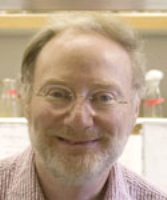The Rice University laboratory of Bruce Weisman has developed a new technique that is capable of measuring batches of single-walled carbon nanotubes more rapidly with minimum manual labor.

Bruce Weisman
Researchers have described their one-size-fits-almost-all method in ACS Nano, a journal of the American Chemical Society. The National Science Foundation and the Welch Foundation supported the research.
Nanotubes with different lengths find use in different applications. For instance, nanotubes with 200-300 nm length can be used for delivering DNA strands and drugs as they are perhaps the easiest to be absorbed by cells. Longer nanotubes hold potential to provide load transfer efficiency and strength to high-tech composite materials used in spacecraft and aircraft applications.
Lead author, Jason Streit devised an experimental technique and image-processing algorithm that can identify and trace nanotube batches suspending in a solution in a small well. The final outcome is a histogram that demonstrates the length distributions in a nanotube batch. The highly automated technique, dubbed length analysis by nanotube diffusion (LAND), enables him to explore batches of nearly 800 nantoubes within two hours. Albeit the technique explores only semiconducting single-walled nanotubes that are fluorescent by nature at near-infrared wavelengths, it provides a convenient way for scientists to characterize nanotube batches.
Nanotubes’ movement in a solution is caused by Brownian motion and their lengths can be detected by this movement. For this purpose, Streit took a video that revealed the length of each nanotube tracked by extracting its trajectory. The software automatically compiled these statistical data to create the histogram. He used special computations to measure nanotubes that demonstrate ‘fragmented trajectories.’
To measure shorter nanotubes, Jason reduced the speed of the nanomaterials by making the solution more viscous, and this was done with the help of a special sugar, said Weisman. LAND is a valuable technique to perform basic and applied research. The scientists are already using this technique in basic photophysical studies.
Disclaimer: The views expressed here are those of the author expressed in their private capacity and do not necessarily represent the views of AZoM.com Limited T/A AZoNetwork the owner and operator of this website. This disclaimer forms part of the Terms and conditions of use of this website.